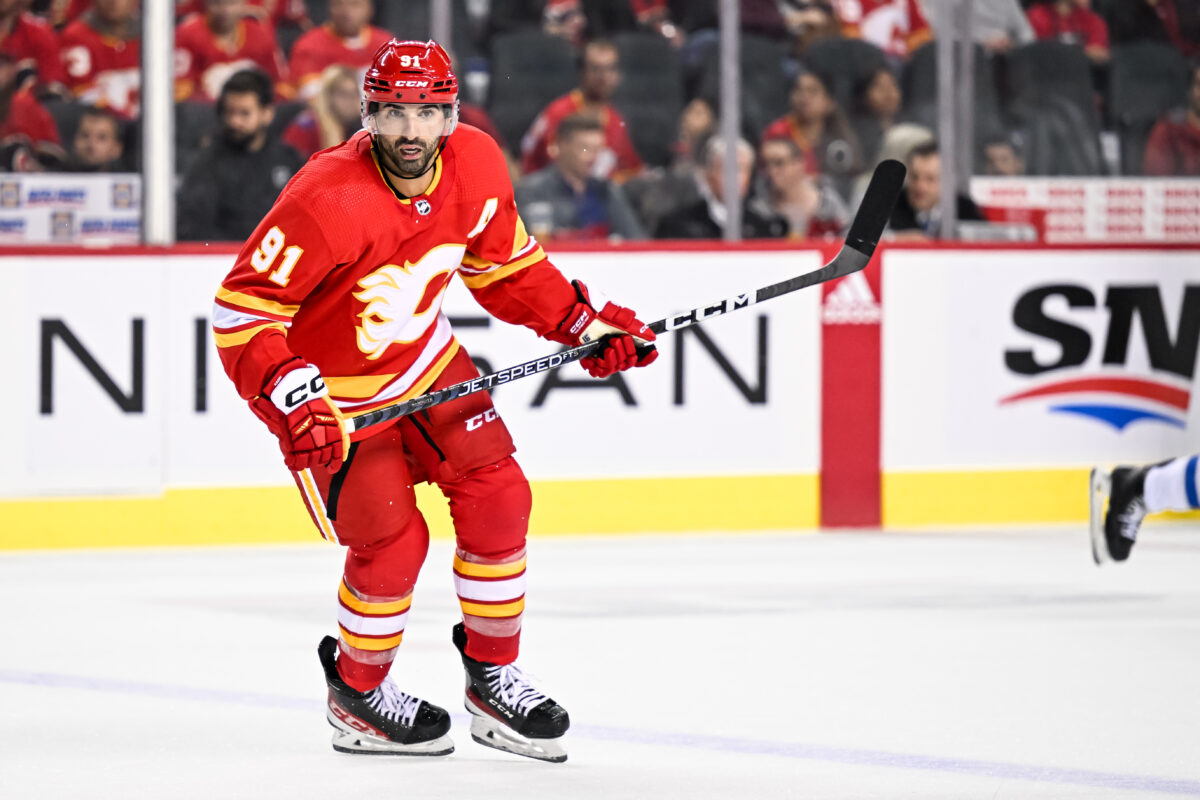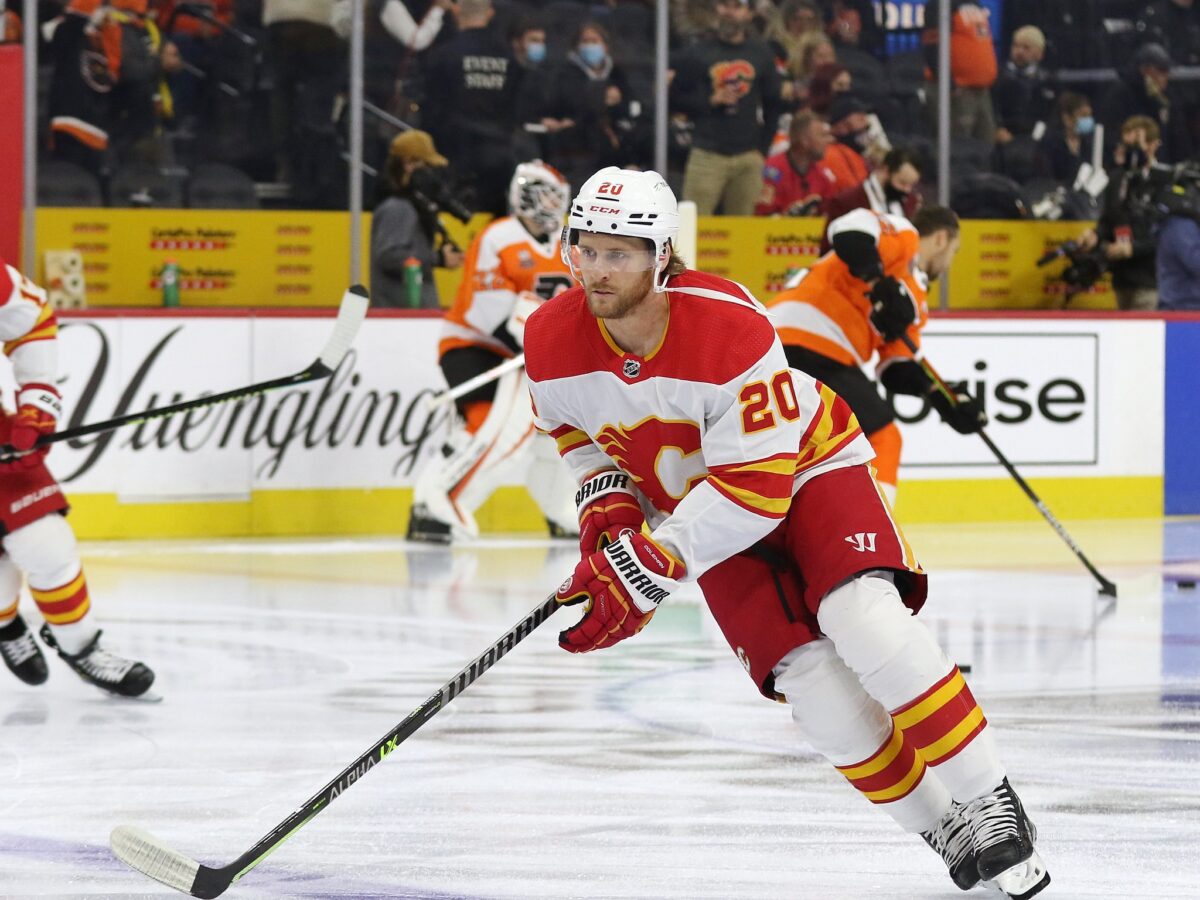The Calgary Flames have the NHL’s third-worst power play, overshadowing their elite penalty kill and hampering the team’s chances of reining in a wild-card spot. It’s familiar territory for a hockey club that has seen its power play outrank the penalty kill just once in the past six seasons. That anomaly occurred in 2018-2019, when they ranked 18th with the man advantage, with the penalty kill reeling in 21st.
But 2018-19 was more a case of a floundering penalty kill than a prolific power play, which scored at a 19.3% efficacy rate. Last season, Calgary had the joint-12th-worst power play, a stark contrast to its joint-fourth-best penalty kill.
Unfortunately, the trend has not only persisted as we bust through the halfway mark of the 2023-24 campaign but it has gotten significantly worse, at least where the power play is concerned. Only the St. Louis Blues (12%) and the Philadelphia Flyers (11.4%) have a worse power play. On the opposite side of the spectrum, the Flames’ penalty kill ranks 5th with an 84% efficiency. Calgary finished the 2022-23 campaign with the league’s fourth-best penalty kill (83% efficiency).
Flames’ Power Play Makes for Gruesome Watching, Reading
Calgary’s power play enjoyed a fruitful start to the season, scoring a goal in each of its first three games. That prosperous patch was as productive as it was fleeting. The man advantage notched three goals during the early six-game losing streak but hit a barren patch after that, scoring just five goals in 22 games.
A recent comparatively bountiful yield has seen the Flames score six power-play goals in the last 10 games, including one by Yegor Sharangovich in Thursday’s 6-2 victory over the Arizona Coyotes – promising news for a team that has struggled mightily to threaten consistently with the extra man. Calgary has managed two power-play goals in a game only twice, against the Vancouver Canucks and Edmonton Oilers, both of which, counterintuitively, ended in defeat.
Related: Panthers’ Sam Reinhart Gets Well-Deserved All-Star Selection
Nazem Kadri, Elias Lindholm, Sharangovich, and Andrew Mangiapane lead the team with two power-play goals, and MacKenzie Weegar and Lindholm sit atop the power-play scoring chart with six points apiece. Compare that to Sam Reinhart’s league-leading 15 power-play markers, and you’ll immediately come to grips with the mountainous issue facing the Flames. Maybe signing former power-play specialist Corey Perry would help, a seemingly unlikely notion.

Calgary is 17-for-132 with the extra man, for a 12.9% success rate. In comparison, the New York Rangers have the best power play and score at a 30.1% clip. While that is inarguably an abject and paltry rate of return, the Flames have enjoyed the 13th-most man advantages; Kadri has drawn 25 penalties, second only to Matthew Tkachuk’s 27.
There is another sliver of good news. The Flames have peppered opposing netminders 179 times while a man up, sitting near the middle of the pile at 17th. The two Flames’ power-play units win enough draws, 56.1%, to set themselves up for success, ranking 13th. That’s where the good-news train reaches its final destination, as Calgary has been unable to capitalize on those somewhat promising analytics.
The Flames have the fourth-worst shooting percentage (8.38%), an ominously low number when you consider the New York Islanders, who have the best shooting percentage, scoring on 20% of their shots with the extra skater. Calgary’s power-play units could find some solace if they were, at a bare minimum, able to keep the puck out of their net. But that’s not the case; they have allowed five shorthanded goals against, tied with four other teams (Coyotes, Chicago Blackhawks, Seattle Kraken, and Pittsburgh Penguins) for the third most.
If reading this makes you wonder which power play has the ignominious and unenviable record as the worst in NHL history, that dishonour goes to the 1997-98 Tampa Bay Lightning, who endured a 9.3% rate of return. The 2020-21 Anaheim Ducks, at 8.9%, were worse, but that horror show occurred during the 56-game Covid-shortened season.
Flames’ Penalty Kill Holding Up Its End of the Bargain
Calgary’s penalty kill has followed up on last season’s success. Allowing the fifth-fewest power-play goals against (21), the Flames have coupled their stout defensive work with a propensity to score at the other end. Calgary has 10 shorthanded goals, including Sharangovich’s tally last night in Arizona, tied atop the chart with the Flyers.
Their -10 shorthanded goal difference is bettered only by Philadelphia’s -8, and Los Angeles’ -8. The Flames’ 0.50 power-play goals against per game is tied for fourth with the Rangers, and their 0.24 shorthanded goals per game sits atop the list, also tied with the Flyers.

To accentuate Calgary’s shorthanded dominance, look no further than their 8.94 goal differential above expected, eclipsed only by the Flyers (10.24) and the Kings (10.55). Of the Flames’ 10 shorthanded goals, Blake Coleman leads the way with four, followed by Sharangovich’s three.
You won’t be shocked to hear that Jacob Markstrom is the primary reason for Calgary’s penalty-kill success. The Flames’ No. 1 netminder is third in shorthanded goals saved above expected with 5.7. Only Alexandar Georgiev (6.0) and Cam Talbot (6.7) rank higher. Markstrom’s .959 save percentage in 4-on-5 situations further reinforces his importance to the team’s penalty-kill efficiency.
While the penalty kill is more than holding up its end of the bargain, a substantial improvement with the man advantage is required for the Flames to leapfrog the teams they’re chasing and secure the second wild-card spot.
*** All statistics in this article were as of Jan. 11, 2024, before the puck dropped on Thursday’s NHL games.